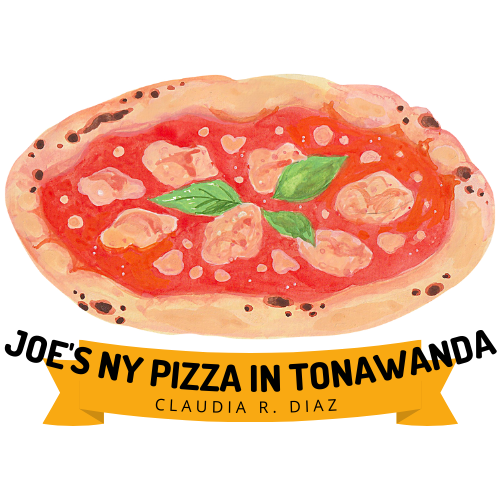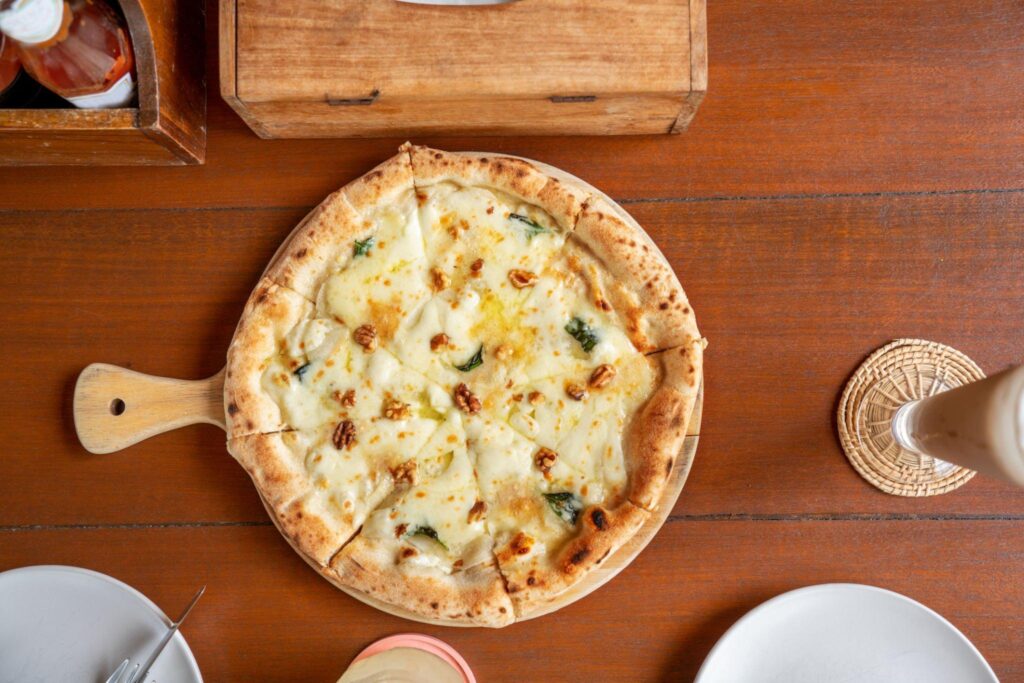Introduction
Pizza is a beloved dish enjoyed by people all over the world. It has managed to create a cult following and has even sparked a debate about its true nature. Is pizza a pie? This question has puzzled many pizza enthusiasts and sparked discussions among foodies. In this article, we will delve into this debate, understanding the arguments on both sides and exploring the true essence of pizza.
Pizza’s True Nature: Is Pizza A Pie?
The debate revolves around the concept of what defines a pie and whether pizza fits that definition. On one side of the argument, there are those who believe that pizza is indeed a type of pie. They argue that a pie is essentially a dish consisting of a filling enclosed in a pastry shell or topped with a crust, which perfectly aligns with the pizza’s composition.
On the other side, there are those who strongly oppose this idea, arguing that pizza is in a category of its own and cannot be considered a pie. They point out that while pizza may have similarities to pies, such as having a crust or being composed of different ingredients, it has unique characteristics that distinguish it from traditional pies.
Understanding The Debate
To truly understand the debate, it’s important to consider the different elements that make up a pie and how they relate to pizza. Let’s examine some key factors:
- Crust: Both pies and pizzas have a crust, but they differ in their composition. The crust of a traditional pie is typically made from pastry dough, whereas the pizza crust is often made from yeast-leavened dough. This distinction in crust composition adds to the argument that pizza is distinct from a traditional pie.
- Filling: Pies are typically filled with a mixture of ingredients, such as meat, vegetables, or fruit. Pizza, on the other hand, is topped with ingredients like cheese, sauce, and various toppings. This distinction in the filling further separates pizza from being classified as a pie.
- Serving: Pies are often served in slices, whereas pizza is commonly served as a whole pie that can be divided into slices. The serving style of pizza also contributes to its uniqueness and differentiation from traditional pies.
In the end, the debate about whether pizza is a pie may come down to personal interpretation and perspective.
While the argument may continue, one thing is undeniable – pizza’s popularity and versatility as a dish have made it a culinary icon worldwide. Whether you consider it a pie or not, the enjoyment and satisfaction that pizza brings to millions of people cannot be denied.
So, next time you indulge in a delicious slice of pizza, ponder this debate and appreciate the unique experience that pizza offers, whether it be as a pie or something entirely its own.
The Origins Of The Word Pie
Exploring The Etymology Of Pie
The term “pie” has a long and fascinating history. Its origins can be traced back to the Latin word “pica,” which means “magpie.” This is because magpies were known for their habit of collecting and hoarding various objects in a manner similar to how a pie collects different ingredients. Over time, the word “pica” evolved into the Old English word “pie,” referring to a baked dish filled with a combination of ingredients.
The Historical Context
In the past, pies were not necessarily the sweet treats we now associate with the term. In fact, they were often savoury dishes that combined meat, fish, vegetables, and other ingredients. Pies were convenient and practical because they allowed people to enclose various ingredients within a pastry shell, preserving them for longer periods. This made pies a popular choice for travellers and workers who needed portable and filling meals.
During the late Middle Ages and Renaissance periods, pies gained further popularity and became lavish displays of culinary creativity. The upper classes would often enjoy intricately decorated pies, featuring elaborate pastry designs and hidden surprises. These pies served not only as a delicious meal but also as a form of entertainment.
Over time, pies continued to evolve and diversify, incorporating different cultural influences. The popularity of sweet pies grew, especially with the introduction of sugar and new fruits from explorations and trade routes. Sweet pies, such as apple pie and cherry pie, became beloved desserts around the world.
Today, various types of pies can be found globally, each with its own unique characteristics. From meat pies like steak and kidney pie in Britain to empanadas in Latin America and quiches in France, pies embrace cultural diversity and offer a wide range of flavours and textures.
Despite the varied interpretations of what constitutes a pie, one thing remains certain: pies are universally loved for their comforting nature and ability to bring people together. Whether it’s a gathering of friends enjoying a pizza pie or a family savouring a homemade apple pie, the spirit of shared enjoyment is at the heart of this culinary creation.
In conclusion, understanding the etymology and historical context behind the word “pie” sheds light on its true nature. Pies have come a long way from their medieval origins as practical and savoury dishes to the diverse and beloved culinary creations we know today. So, the next time you indulge in a slice of pie, take a moment to appreciate the rich history and cultural significance that this timeless dish embodies.
The Definition Of A Pie
When it comes to defining a pie, it is important to understand its characteristics and how it differs from other dishes. Traditionally, a pie is a baked dish with a pastry or bread crust that encloses a filling, usually consisting of sweet or savoury ingredients. The crust serves as both a container and a protective layer for the filling, creating a complete package.
Characteristics Of A Traditional Pie
A traditional pie typically exhibits the following characteristics:
- Crust: The crust is an essential part of a pie. It can be made from various types of dough, such as shortcrust, puff pastry, or even graham cracker crust for sweet pies. The crust provides structure and texture to the overall dish.
- Filling: The filling is the heart of any pie. It can be sweet, like fruit fillings or custards, or savoury, like meat, vegetables, or cheese. The filling is enclosed within the crust and cooked together to create a harmonious combination of flavours.
- Baking: Pies are traditionally baked in an oven, allowing the crust to become golden and crisp while the filling cooks and becomes tender. The baking process brings out the flavours and aromas, making each slice of pie a delight to enjoy.
Comparing Pizza With Pie
Pizza is a beloved dish enjoyed worldwide, but is it truly a pie? While there are some similarities between pizza and pie, there are distinct differences that set them apart.
- Crust: Both pizza and pie have a crust, but the crusts differ in texture and composition. Pizza crust is typically thinner and more chewy, while pie crusts are thicker and flakier.
- Filling: While traditional pies have a defined filling that is enclosed within the crust, pizza toppings are scattered over the crust. The toppings on a pizza can range from cheese and tomato sauce to various meats, vegetables, and herbs.
- Baking: Pizza is typically baked at high temperatures for a short duration to achieve a crispy crust and melted toppings. Pies, on the other hand, are baked at moderate temperatures for a longer time to fully cook the filling and create a golden crust.
While some may argue that the fundamental structure of pizza resembles an open-faced pie, the culinary world generally distinguishes between the two based on their differences in crust, filling, and baking methods.
In conclusion, while pizza does share some similarities with pie, such as its use of crust and filling, there are significant differences that set it apart. Understanding the characteristics of a traditional pie and comparing them to pizza helps clarify the distinction between the two dishes.
Is Pizza Actually A Pie?
Arguments For Pizza Being A Pie
The debate over whether pizza is a pie or not has been ongoing for quite some time. Those who argue that pizza is a type of pie often cite the following reasons:
- Crust and filling: Like a traditional pie, pizza has a crust and a filling. The crust serves as the base while the toppings (cheese, sauce, and various toppings) can be considered the filling.
- Baking method: Pizzas are typically baked in an oven, just like pies. The baking process allows the dough to rise, creating a similar texture to pie crusts.
- Serving style: Pizzas are typically sliced into wedges and served in individual portions, similar to how pies are sliced and served.
- Historical connections: The origins of pizza can be traced back to ancient civilizations such as the Greeks and Egyptians who made flatbreads with various toppings. These early pizza-like dishes can be seen as precursors to the modern pizza pie.
Arguments Against Pizza Being A Pie
On the other hand, there are those who argue that pizza is not a pie but rather a unique culinary creation. Some of the reasons put forward include:
- Lack of pastry crust: Unlike traditional pies that have a pastry crust, pizzas typically have a bread-like crust made from dough. This fundamental difference in crust composition sets pizza apart from pies.
- Toppings on top: In most traditional pies, the filling is enclosed within the pastry crust. In contrast, pizza toppings are typically placed on top of the crust, exposing them to direct heat during baking.
- Savoury vs. sweet: Pies are traditionally associated with sweet fillings such as fruit or custard, while pizzas are known for their savoury toppings like cheese, sauce, and meats.
- Cultural associations: Pizza has become a cultural icon in its own right, with its own unique identity and associations. It has evolved beyond being considered solely a type of pie.
In conclusion, the debate over whether pizza is a pie or not is largely a matter of interpretation and personal preference. While some argue that pizza shares similarities with pies in terms of crust, filling, and baking method, others believe that its unique characteristics and cultural associations set it apart as a distinct culinary creation. Ultimately, it is up to individuals to decide whether they consider pizza a pie or not.
Pizza Vs. Pie: The Verdict
Analyzing Different Perspectives
The debate over whether pizza is a pie or not has sparked conversations among food enthusiasts for years. To settle this argument, it is crucial to analyze different perspectives and understand the true nature of pizza.
One perspective argues that pizza is indeed a pie. The reasoning behind this claim is based on the fact that pizza consists of a dough base topped with various ingredients, similar to other traditional pies. In this context, the crust serves as the pie’s base, while the toppings act as the filling. From this viewpoint, it is easy to see why some consider pizza to be a type of pie.
However, there is another perspective that opposes the notion of pizza being a pie. According to this viewpoint, pies typically have a closed top made of pastry or dough, while pizza has an open top with toppings exposed to heat during the baking process. Additionally, traditional pies usually contain sweet fillings, while pizza leans towards savoury options. These distinctions suggest that pizza should not be classified as a pie.
Drawing A Conclusion
In conclusion, the true nature of pizza can be understood by considering its unique characteristics. While pizza shares similarities with traditional pies in terms of its dough base and ingredients, its open top and savoury nature set it apart. Pizza has evolved into its distinct entity, recognized and loved globally for its delicious flavours and endless variations.
Rather than getting tangled in the debate of whether pizza is a pie or not, it is more important to appreciate the culinary heritage and cultural significance of this beloved dish. Whether you enjoy a classic Margherita or indulge in a deep-dish Chicago-style pizza, the enjoyment and satisfaction it brings remain the same.
So, next time you find yourself discussing pizza’s categorization, embrace the diversity and uniqueness of this culinary creation. After all, pizza is a symbol of comfort, joy, and shared moments that transcend any classification.
FAQ: Is Pizza Actually a Pie?
Q: Is pizza considered a pie?
A: The classification of pizza as a pie is a subject of debate. While many people consider pizza to be a type of pie, some argue that the term “pie” traditionally refers to a dish with an open top, whereas pizza has a closed shape.
Q: Why is pizza sometimes referred to as a pie?
A: The term “pie” is often used to describe a dish that consists of a crust-based foundation topped with various ingredients. In American culinary tradition, pizzas are frequently referred to as pies due to their circular shape and the fact that toppings are layered on top of the dough.
Q: Is there a difference between a pizza and a pie?
A: When comparing a pizza and a traditional pie, the main distinction lies in the type of crust. While both dishes have a crust, pies typically have a flaky or pastry-like crust, whereas pizzas have a thicker, doughy crust. Additionally, pies are often sweet desserts, while pizzas are savoury dishes.
Q: Can a pizza be considered a pie?
A: The categorization of a pizza as a pie can vary depending on the cultural context and personal opinion. In certain regions or culinary traditions, pizzas are commonly referred to as pies due to their shape and the manner in which toppings are added. Ultimately, whether or not one considers a pizza to be a pie is subjective.
Q: Why is it important to define whether a pizza is a pie or not?
A: The debate regarding whether a pizza is a pie is largely a matter of semantics and personal interpretation. While it can be an interesting topic for discussion, the categorization does not significantly impact the enjoyment or taste of the food itself.
Q: Does the origin of the word “pie” affect how we categorize pizza?
A: The origin of the word “pie” does play a role in the debate. Historical definitions of a pie typically refer to a dish with a crust and a filling, which aligns more closely with traditional pies rather than pizzas. However, language evolves, and cultural perspectives can influence how terms are used.
Q: What does it really matter if a pizza is called a pie or not?
A: In the end, the classification of pizza as a pie or otherwise does not fundamentally change its appeal or popularity. Whether you refer to it as a pie or a pizza, this circular dish with tomato sauce, bread, and various toppings continues to be a beloved favourite worldwide.
Conclusion
In conclusion, branding plays a crucial role in differentiating your business from competitors and establishing a strong and reliable brand identity. It goes beyond creating a logo and a catchy slogan; it is about showcasing your business’s uniqueness and creating a point of difference. By investing in branding efforts, you can distinguish your business from competitors and become more recognizable to your target audience. Building a clear brand strategy, developing a strong online presence, and delivering exceptional customer experience are some key strategies to effectively utilize branding.
Looking at examples like Apple, Nike, and Coca-Cola, we can see the power of consistent branding in creating a strong emotional connection with customers. These brands have effectively communicated their values, unique selling propositions, and quality through consistent messaging and captivating visual identity.
Appreciating Pizza’s Unique Identity
Pizza is undoubtedly a unique and beloved food that has taken on various forms around the world. While it is often referred to as a “pie,” it is important to appreciate its distinctive qualities and identity. Pizza is typically made from dough, topped with various ingredients such as sauce, cheese, meat, and vegetables, and baked in an oven. Its round shape, thin crust, and combination of flavours make it a popular choice for millions of people globally.
Final Thoughts On The Debate
The debate over whether pizza should be classified as a “pie” may continue, but it is important to focus on the enjoyment and appreciation of this delicious food. Whether you consider it a pie or a unique dish in its own right, pizza continues to bring people together and bring joy to our taste buds. So let’s set aside the debate and savor the wonderful experience of enjoying a hot and cheesy slice of pizza.
Additionally, exploring different types of pizza from various regions and experiencing the diverse toppings and flavours can further enhance our love for this culinary delight. Whether you prefer the classic Margherita from Naples, the deep-dish Chicago-style pizza, or the New York-style thin crust, each variation adds its own twist to the pizza experience.
Ultimately, let’s embrace the true nature of pizza as a delicious and versatile dish that has captivated hearts and taste buds around the world. Whether it’s enjoyed at a family dinner, a social gathering, or a quick bite on the go, pizza will continue to hold a special place in our hearts and stomachs for years to come.

Looking for delicious pizza and authentic Italian cuisine? Look no further than Claudia R. Diaz at Joe’s NY Pizza in Tonawanda! Our menu features a wide variety of classic dishes and innovative creations, all made with the freshest ingredients and prepared with the utmost care. Whether you’re in the mood for a traditional Margherita pizza or something a little more adventurous, like our Buffalo chicken pizza or shrimp scampi pasta, Claudia R. Diaz has something to satisfy every craving. So why wait? Visit us today and experience the best Italian food in Tonawanda! #ClaudiaRDiaz #JoesNYPizzaTonawanda #ItalianFood #PizzaLovers #FoodiesUnite



